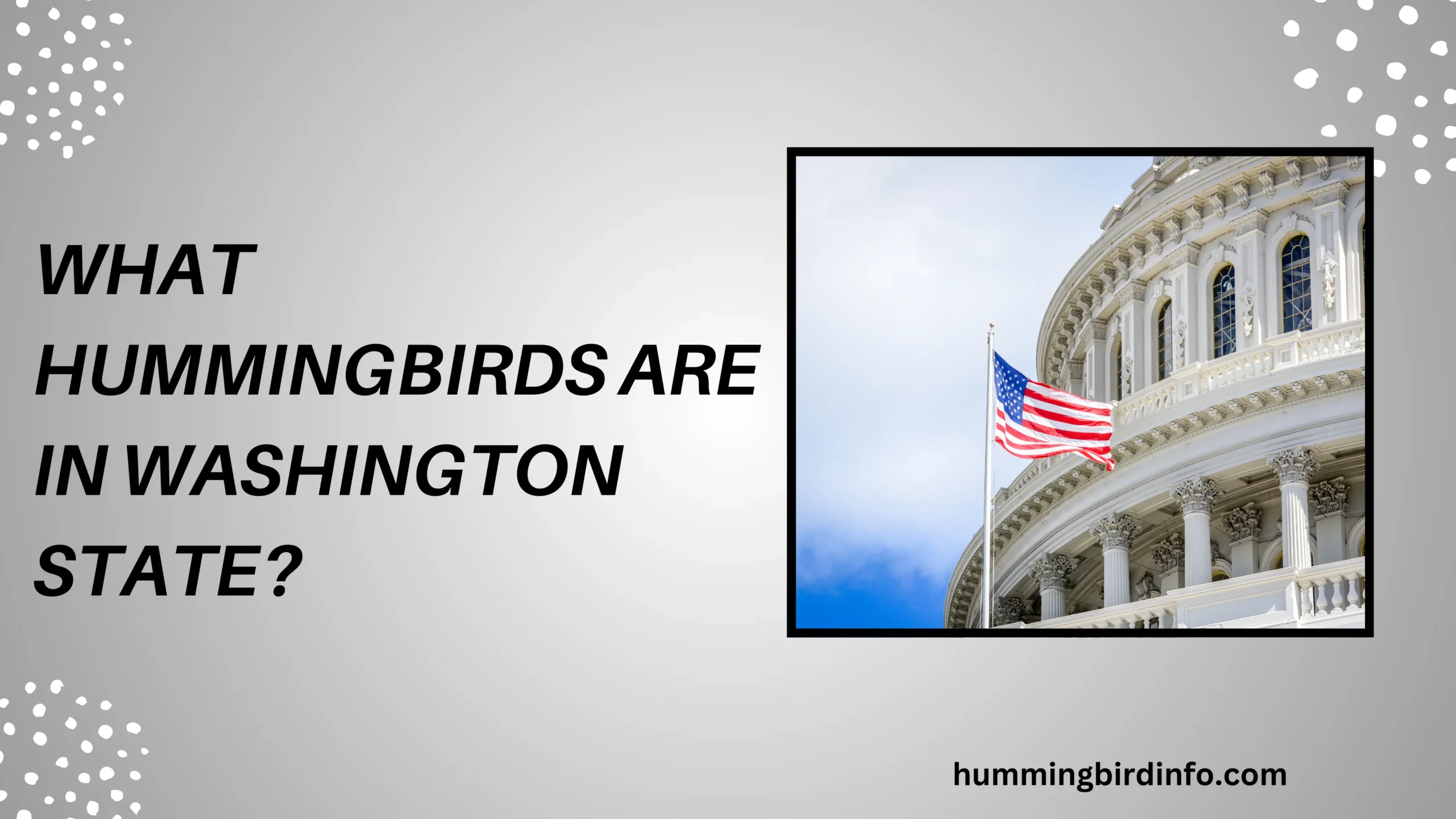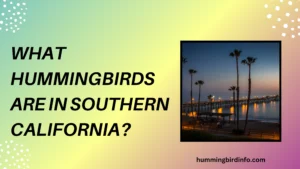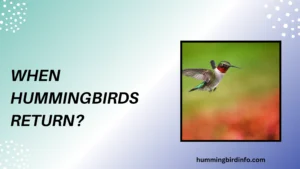They arrive with the breeze of spring, darting through the air like living jewels, shimmering in hues of ruby, emerald, and gold. Hummingbirds, with their rapid wingbeats and hovering grace, bring a sense of magic to Washington’s forests, meadows, and gardens.
These tiny marvels captivate both seasoned birdwatchers and curious backyard observers.
Washington’s diverse terrain—from the coastal lowlands to the Cascade mountains—offers a rich variety of habitats for hummingbirds. Some species stay year-round, braving wet winters, while others embark on epic migrations to reach this fertile land.
This makes Washington one of the best places in the Pacific Northwest to observe hummingbird diversity.
These birds are not just beautiful—they are ecological heroes, vital for the pollination of native flowers, trees, and shrubs. Culturally, they symbolize resilience, joy, and energy, making their presence feel both mystical and meaningful.
Whether you live in an urban neighborhood or the wilderness, knowing your hummingbird neighbors deepens your connection to nature.
In this guide, we’ll explore the regular residents and seasonal visitors of Washington State, from the fiery Rufous to the elusive Calliope. You’ll learn how to identify them, where they nest, how they migrate, and how to support their survival.
Washington is not just their home—it’s a hummingbird haven.
Contents
- 1 The Regular Residents and Visitors
- 2 Conclusion:
- 3 FAQs
- 4 1. What time of year do hummingbirds arrive in Washington?
- 5 2. What is the most common hummingbird in Washington?
- 6 3. Can I feed hummingbirds in the winter in Washington?
- 7 4. What flowers attract hummingbirds in Washington?
- 8 5. Are hummingbirds endangered in Washington?
- 9 6. How can I identify a hummingbird in my yard?
The Regular Residents and Visitors
Rufous Hummingbird (Selasphorus rufus): The Fiery Traveler
The male Rufous stuns with his burnt-orange body and gleaming red-orange gorget, while females show green backs and rusty flanks. Their straight, slim beaks and compact size make them easy to recognize. They are among the earliest arrivals, showing up in late February across Washington.
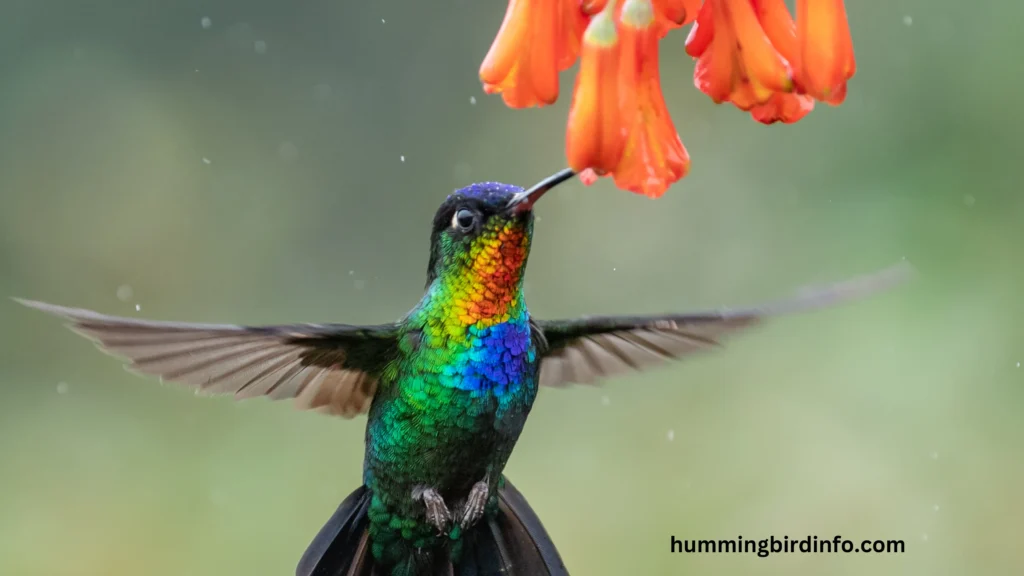
They travel over 3,000 miles, from Mexico to Alaska, making one of the longest migrations relative to body size. Washington is a critical stopover and breeding zone, especially rich in spring blooms like salmonberry and currant. They leave by early fall, following flowers along the Rockies back south.
Fiercely territorial, Rufous males defend feeding zones with high-speed dives, creating loud buzzing with their tail feathers. Their display flights are a dramatic part of spring’s wildlife theatre. They’re known to chase off much larger birds from feeders or flowers.
They nest in forests, open woodlands, parks, and sometimes backyard gardens, especially in western Washington and mountain elevations east of the Cascades. They seek out patches with dense vegetation and nearby flower sources. Nests are built from plant down and spider silk.
Their population is declining, earning them a Near Threatened label. This may be due to climate change, which shifts flower bloom times and disrupts migration. Conservation actions like planting natives and reducing pesticides can help their numbers rebound.
Anna’s Hummingbird (Calypte anna): The Year-Round Westerner
Males flash a brilliant rose-pink crown and throat, contrasting with their shimmering green backs and gray underparts. Females lack the crown but have green tops and white-tipped tails. They’re slightly bulkier than other hummingbirds.
Once limited to California, Anna’s have expanded northward, becoming year-round residents in western Washington. They thrive in urban gardens, parks, and wooded suburbs, especially where feeders and flowers are available year-round. Puget Sound is their primary territory.
Their courtship includes dramatic dives, with tail feathers creating a sharp chirp-like sound at the bottom of the arc. Males guard feeders aggressively and perch high to survey their domain. They often seem surprisingly bold for their size.
Anna’s start nesting as early as January, even in the cold. They adapt by nesting in shrubs, trees, and even outdoor light fixtures or vines. These flexible nesters represent hummingbird resilience and urban adaptability.
Because they stay through winter, they need reliable food sources, especially during freezes. Leaving feeders out and thawed can be life-saving. Their success shows how human support can play a positive role in a hummingbird’s life.
Calliope Hummingbird (Selasphorus calliope): The Tiny Mountaineer
The smallest bird in North America, the Calliope male dazzles with purple-magenta streaks on a white throat. Females are pale underneath with dusky marks and rusty patches on the sides. Their tiny size often catches birders off guard.
They prefer eastern Washington’s higher elevations, breeding in coniferous forests and wildflower meadows. Migration takes them from Mexico in spring (April–May) and again in late summer when heading back south. They’re true mountain wanderers.
Their diet includes nectar and tiny insects, which they pluck from air or leaves. Their small size means efficient feeding, and they often feed lower to the ground than other species. Watch for them in alpine fields or blooming slopes.
Females nest in low shrubs or branches, usually camouflaged and safe from predators. Their nests are compact, soft, and well-hidden, built with plant fuzz and silk. They tend to be shy but will defend feeding grounds.
They’re not considered endangered but are sensitive to habitat changes, especially at high altitudes. Preserving mountain ecosystems helps secure their future. They’re like a rare gem, tucked into Washington’s rugged east.
Black-chinned Hummingbird (Archilochus alexandri): The Eastern Visitor
Males have a shimmering black-purple throat that looks velvet in bright light, with green backs and white undersides. Females have pale throats and white behind the eye. They’re slim, elegant, and mostly silent flyers.
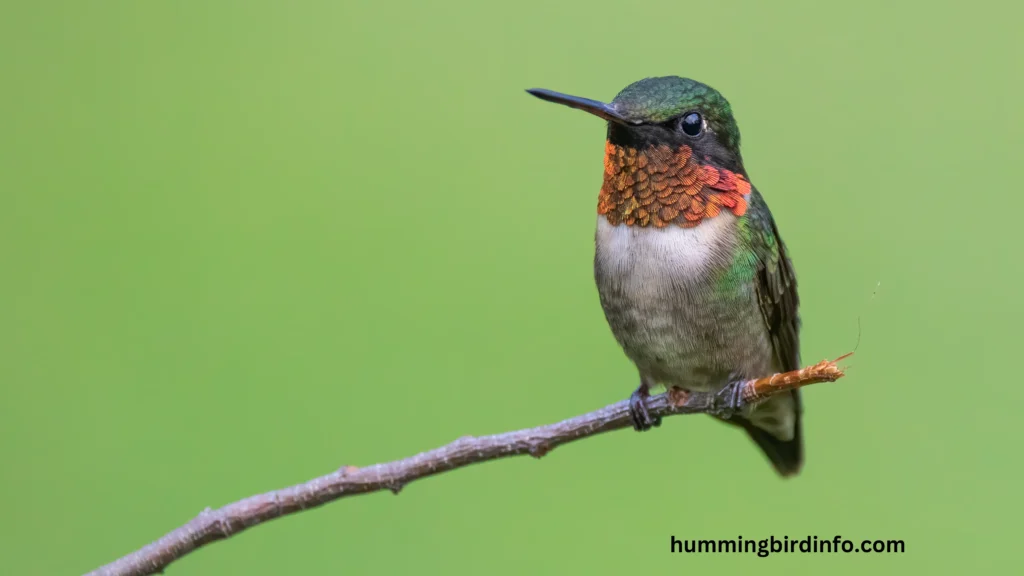
They’re primarily found in eastern Washington, especially in riparian areas, desert foothills, and arid valleys. Their breeding season starts around April, and they’re gone by August. Unlike others, they favor dry scrub and water-rich canyons.
These hummingbirds are a bit more secretive, often staying low and near dense vegetation. They hover steadily and feed in quieter patches. Males also perform courtship dives but less aggressively than Rufous or Anna’s.
They build low nests on overhanging branches near streams or rivers, using cottonwood fluff, moss, and spider silk. They rely heavily on nearby insect populations for protein during breeding. Flowers are important but not their only source.
They’re not threatened but face habitat loss due to water management, grazing, and urban sprawl. Protecting riparian corridors and reducing pesticide use are crucial. These hummingbirds remind us that beauty often lives in the quiet corners.
Conclusion:
Washington is blessed with an impressive variety of hummingbirds—from fiery Rufous to hardy Anna’s and rare mountain Calliopes. Each species plays a vital role in our natural ecosystems and brings joy to human eyes and hearts. Their diversity reflects the state’s rich ecological tapestry.
Hummingbirds are essential pollinators, cultural icons, and delicate survivors of a changing world. Their presence marks the rhythm of seasons and reminds us of nature’s fierce determination. Even in the cold, they persist with brilliance and grace.
We can protect them by planting native flowers, providing clean feeders, avoiding pesticides, and supporting habitat conservation. In doing so, we not only preserve a species—but enrich our own lives with color, motion, and a sense of wonder.
FAQs
1. What time of year do hummingbirds arrive in Washington?
Most hummingbirds arrive between late February and May, depending on the species. Rufous is one of the earliest, while Black-chinned and Calliope follow in April. Anna’s can be seen year-round in western areas.
2. What is the most common hummingbird in Washington?
The Rufous Hummingbird is the most commonly seen during the breeding season, especially in spring and summer. Anna’s Hummingbird is now very common year-round in urban western regions.
3. Can I feed hummingbirds in the winter in Washington?
Yes, especially if you live in western Washington where Anna’s Hummingbirds overwinter. Use a 1:4 sugar-water solution and keep it from freezing during cold spells. Clean the feeder regularly.
4. What flowers attract hummingbirds in Washington?
Native plants like red-flowering currant, salmonberry, honeysuckle, and columbine are excellent. Also consider bee balm, penstemon, and fuchsia for gardens. Aim for continuous blooms across seasons.
5. Are hummingbirds endangered in Washington?
Not all are endangered, but Rufous Hummingbirds are listed as Near Threatened due to population declines. Climate change and habitat loss are key threats. Conservation efforts are essential.
6. How can I identify a hummingbird in my yard?
Check the color of the throat and back, the time of year, and the location. Males often have more vivid colors, while females have subtler patterns. Flight patterns and behavior also help.

